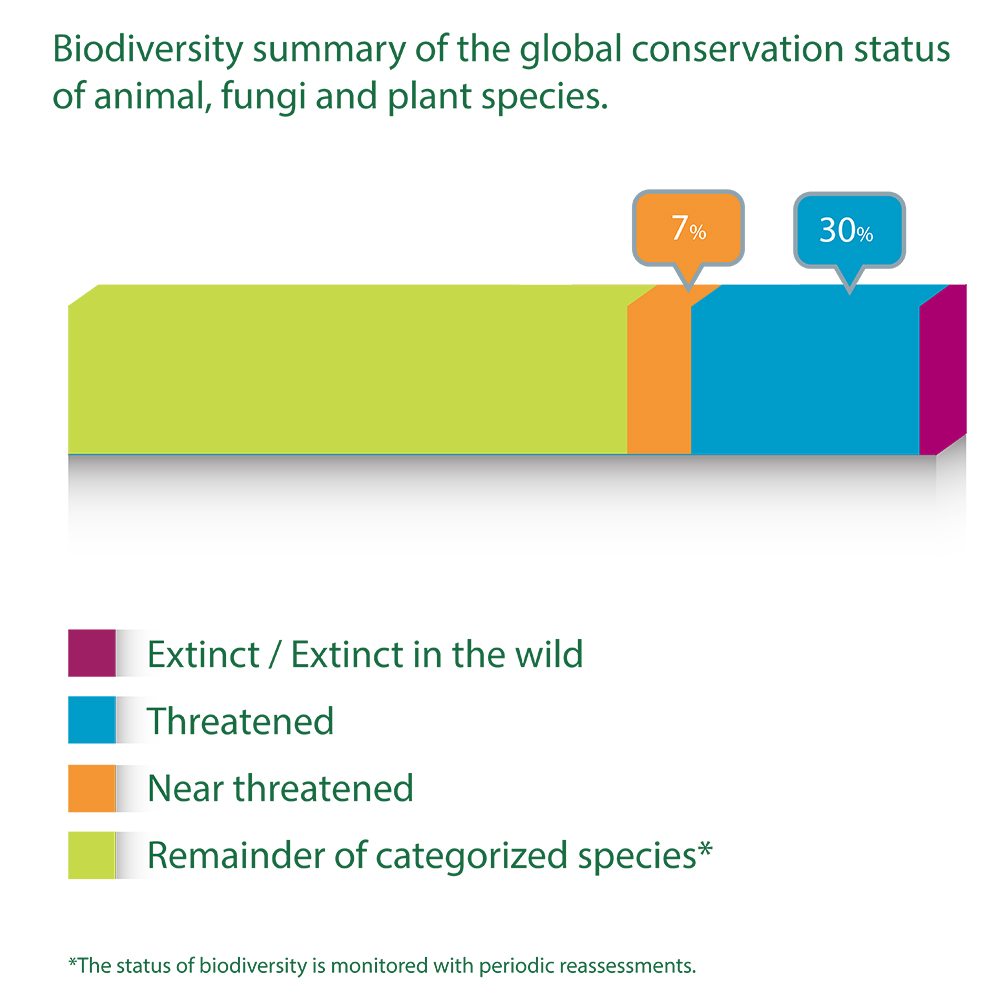
Sources:
International Union for Conservation of Nature’s Red List of Threatened Species, http://www.iucnredlist.org/
Food and Agriculture Organization of the United Nations, http://www.fao.org/
Convention on Biological Diversity, https://www.cbd.int/
Millennium ecosystem assessment, 2005. Ecosystems and human well-being: synthesis. Washington: Island Press
Agriculture has long been identified as the leading cause of biodiversity loss and ecosystem change.
Over the last hundred years, around 75% of genetic diversity found in agricultural crops has been lost. This loss continues through widespread intense production, chemical processes, pollution, nutrient loading (via fertilizers, detergents and land run-off) and introduction of non-native species.
Within agricultural ecosystems, the homogenization in producing crops and food resources is one of the leading causes of biodiversity loss. Today, 90% of food comes from only 15 plant and 8 animal species, and wheat, rice and maize crops provide more than half of the global plant-based energy intake.
The current agricultural practices also impact other ecosystems, for example, through the use of irrigation, which puts demands on natural water resources, or through overgrazing, as well as pollution and nutrient loading, leading to critical conditions in local and distant biospheres. Land and habitat conversion, towards agricultural uses, also leads to biodiversity loss. Click here to read more about changes in land use.
